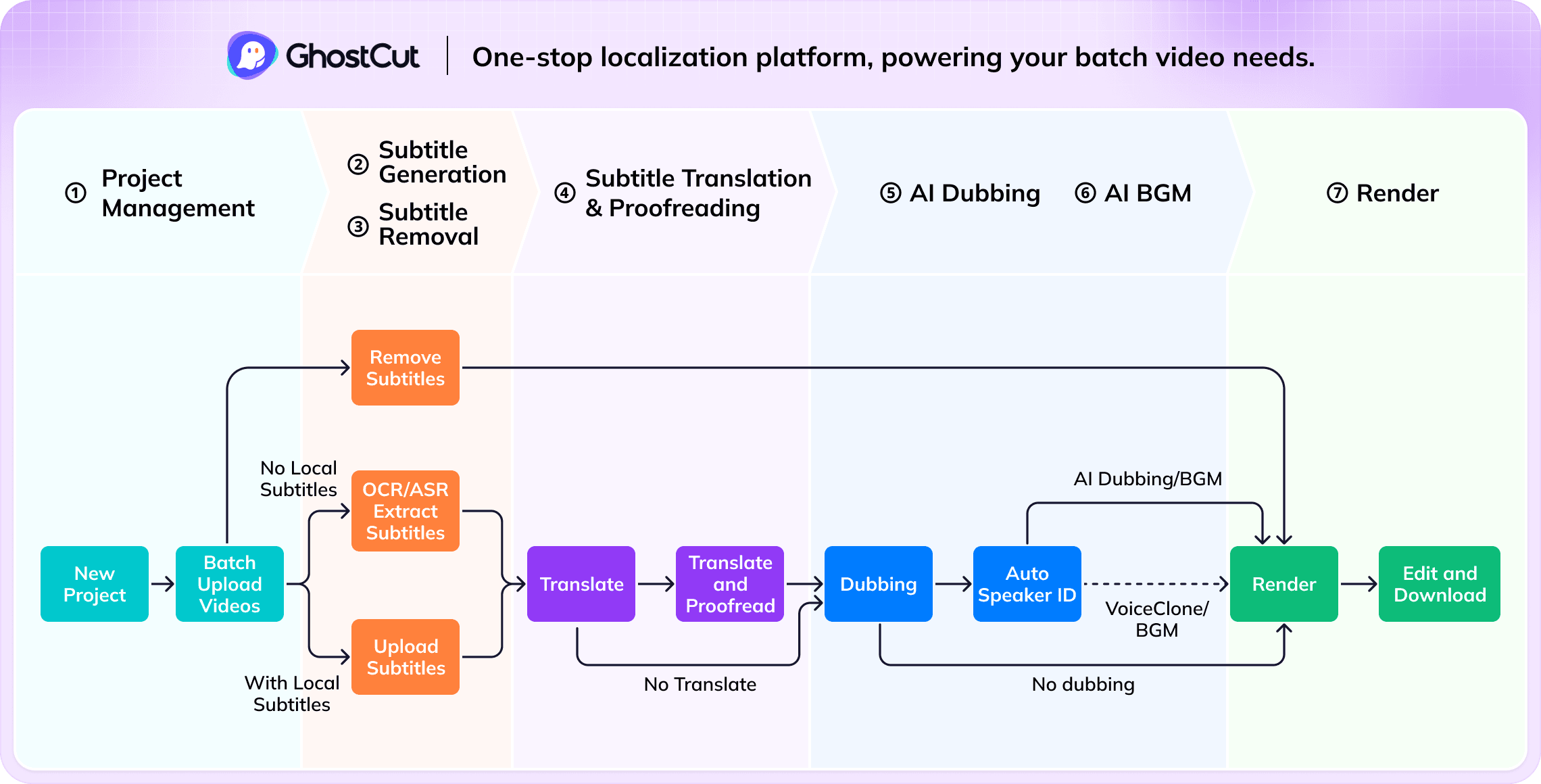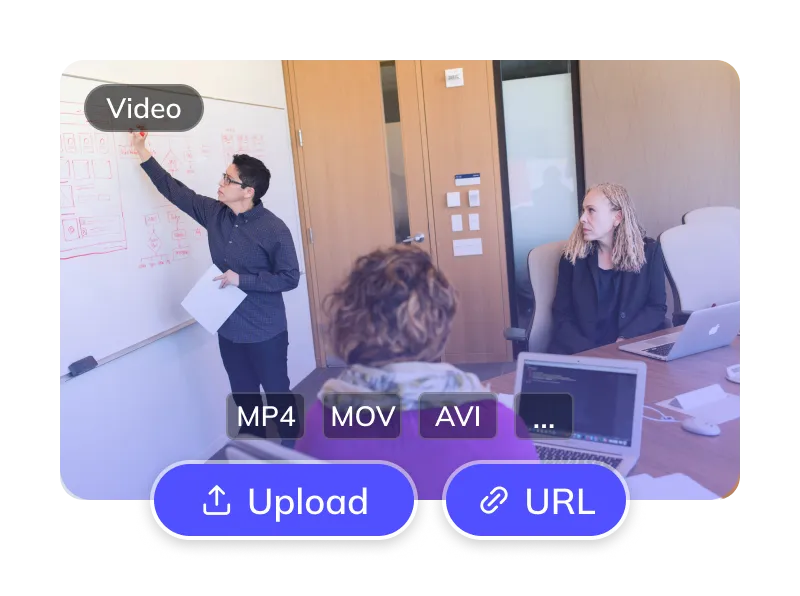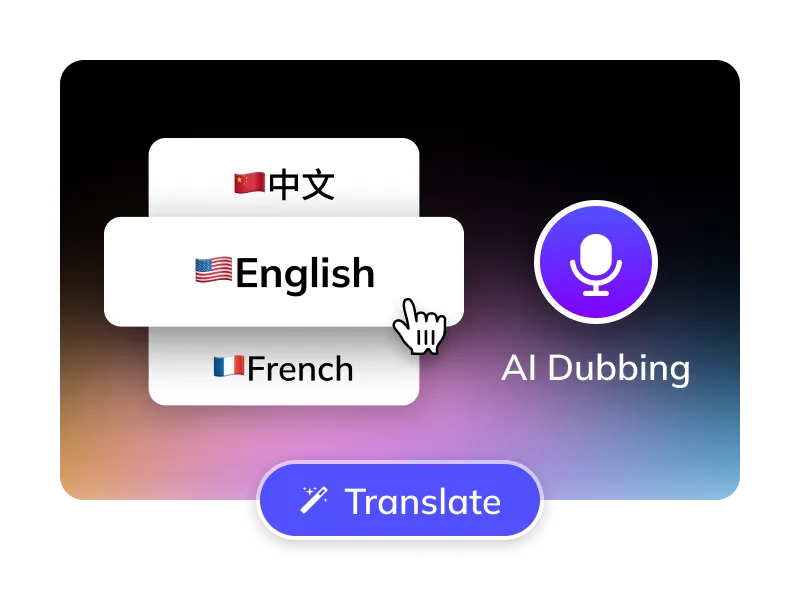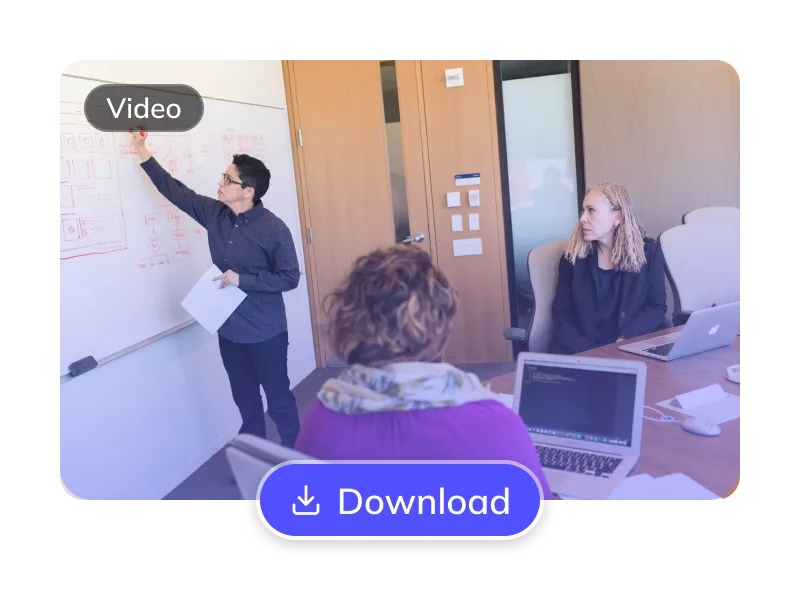How to Translate Japanese Videos to English ?
Translate Japanese Videos to Turkish in 3 Easy Steps
Trusted by 1,500,000+ Global Creators and Businesses
Why GhostCut for Your Video Translations?
GhostCut is your all-in-one AI solution for translating Japanese content into natural, engaging Turkish.
Effortless Project Management
Manage Japanese assets, subtitles, & Turkish videos. Batch process projects efficiently.
Pinpoint Turkish Accuracy
Up to 99.5% accurate. Optimized for Japanese-to-Turkish with LLM calibration & multi-agent review for culturally fluent Turkish translations.
Lifelike Turkish AI Dubbing
Choose from diverse, human-like Turkish AI voices (US/UK accents). Emotion-cloning technology captures original tone for natural Turkish delivery.
Flexible Japanese Subtitle Options
Optionally erase original Japanese hardsubs for a clean slate. Translate embedded Japanese subtitles directly.
Smart Multi-Speaker ID (Japanese)
AI detects multiple speakers in Japanese videos. Assign or clone distinct Turkish voices per character, with cross-episode consistency for complex Turkish dubs (dramas, interviews).
Efficient Batch Processing & API
Batch translate and dub 100s of Japanese videos to Turkish at once. Seamlessly integrate with our robust API.
Versatile BGM Control
Keep or mute original BGM. Our unique tech can also isolate sound effects, meeting diverse copyright and distribution needs.
Unbeatable Value
Flexible Japanese-to-Turkish plans. Try core features free. Automated pro service from just $0.1/minute.
Easy Online Access
No downloads. Instantly translate Japanese videos to Turkish online. Works on Windows, Mac, & major mobile browsers for cloud processing anywhere.
The GhostCut Edge: Unmatched Accuracy, Speed, and Value.
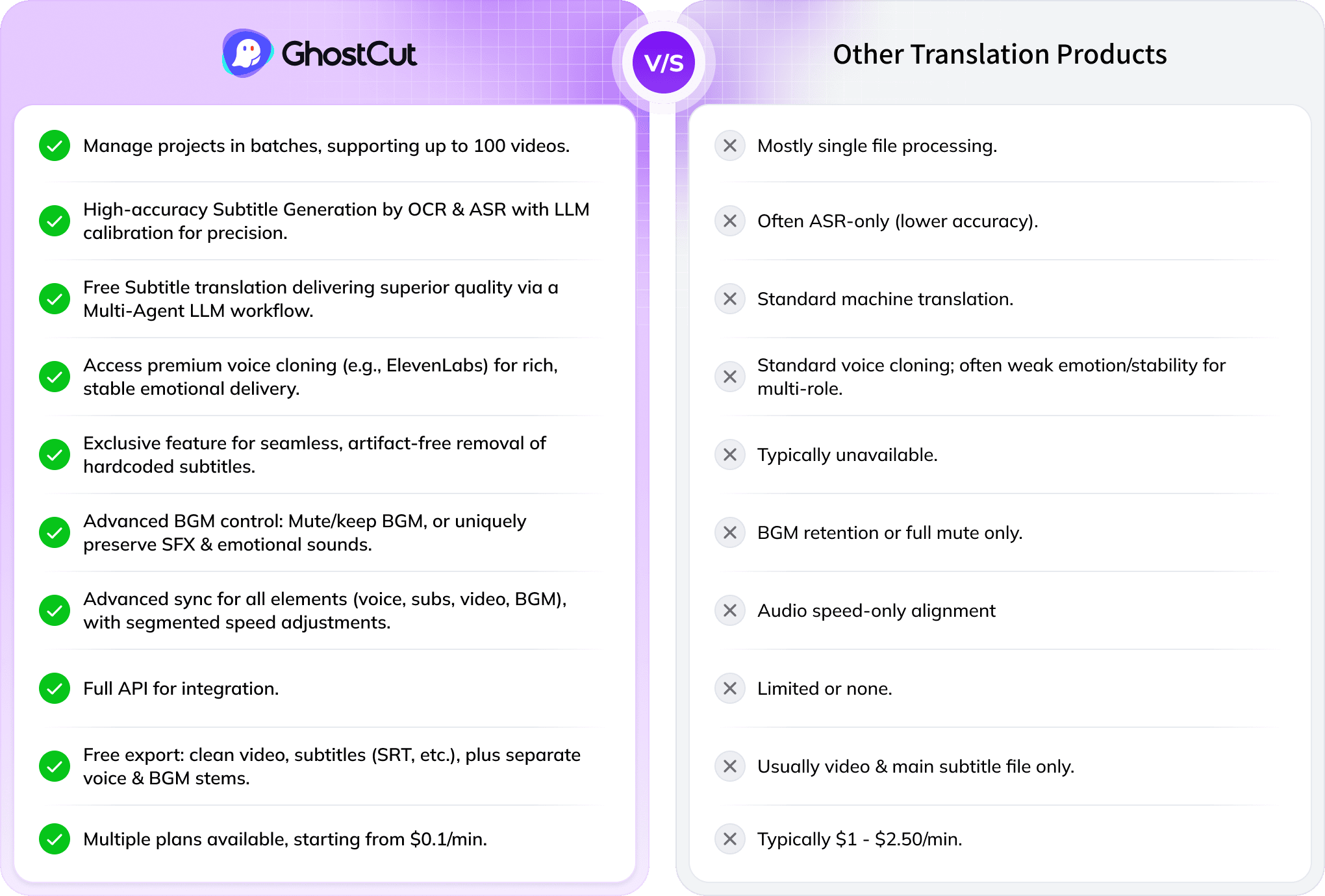
Every Algorithmic Optimization, Engineered for Quality Turkish Video
Mastering Long-Form Japanese Drama & Multi-Character Dubbing
Translating a 100-minute Japanese drama with 4000+ lines and many characters into Turkish is tough. Standard AI struggles to tell speakers apart, causing errors. GhostCut’s multi-modal AI (video, voice, text) excels in long-form, multi-speaker content, ensuring accurate, consistent character voices across entire series.
Translate Now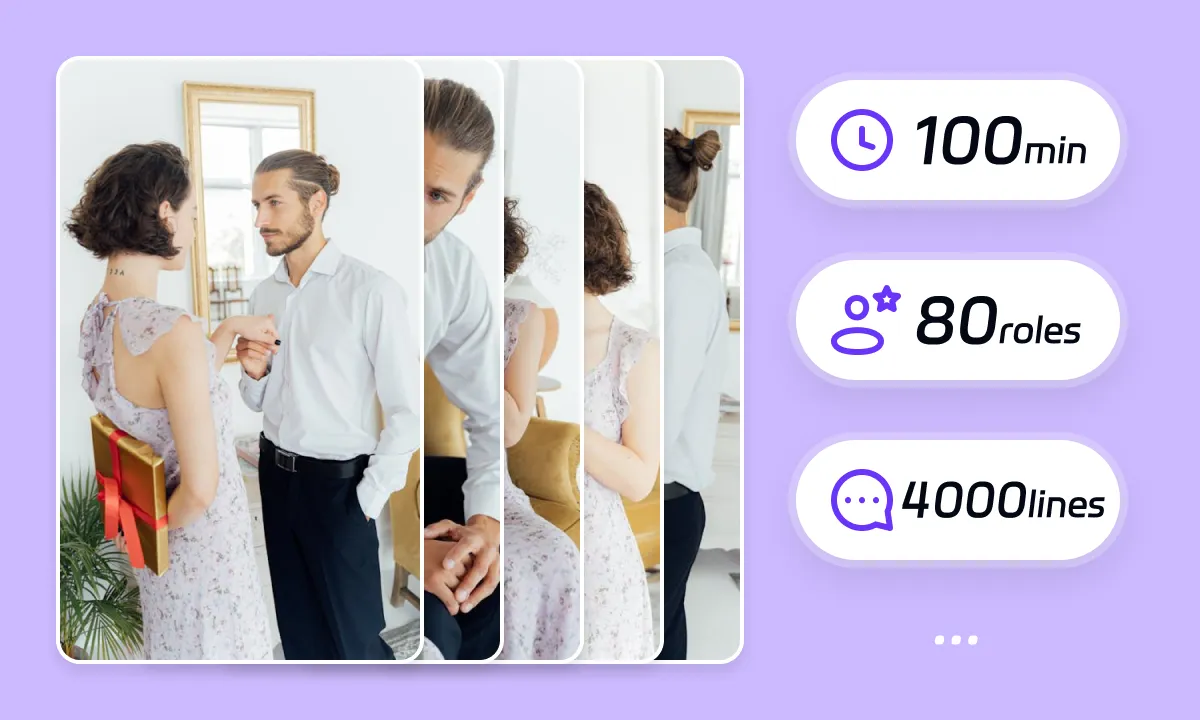
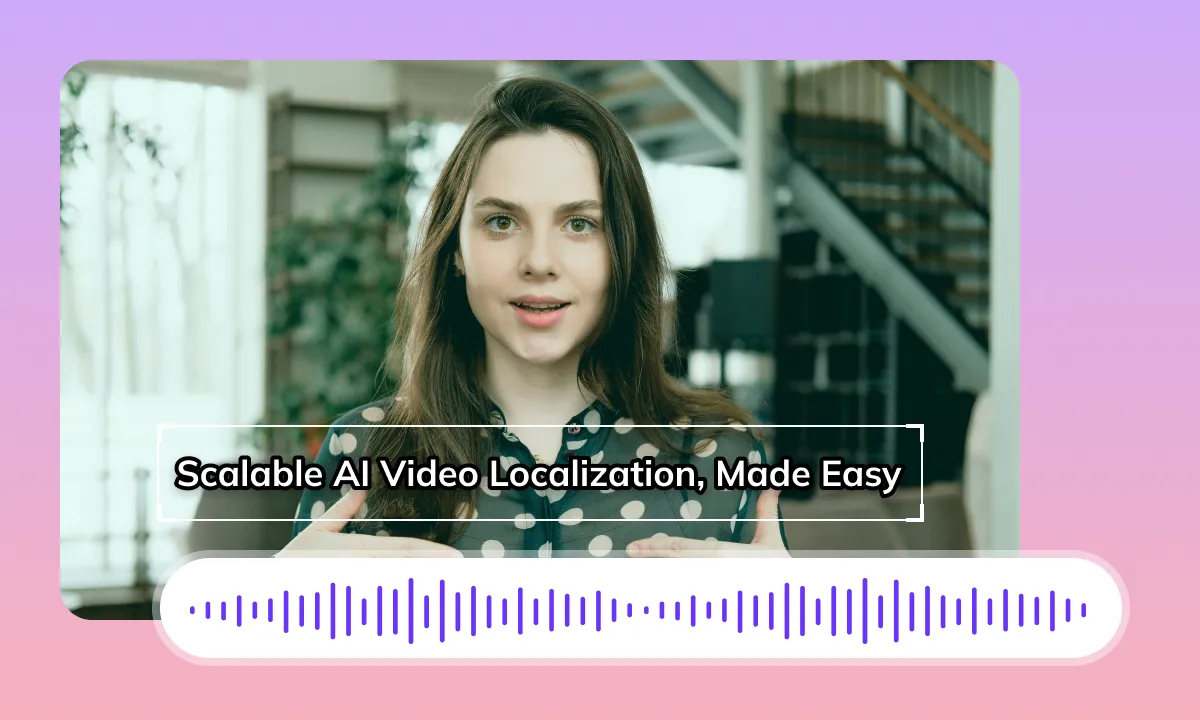
Seamless Turkish Dubbing & Perfect Lip-Sync
GhostCut ensures natural Turkish audio flow by treating related subtitles as whole ideas for TTS. It then precisely times new Turkish subtitles. Since Japanese-to-Turkish translation can change speech length, our AI expertly adjusts the new Turkish audio, subtitles, video, and BGM to maintain perfect sync, just like a seasoned editor.
Translate NowBoost ROI with Flawless Japanese Subtitle Removal
Original Japanese hardsubs can limit your video's global appeal. GhostCut’s AI doesn't just blur; it intelligently reconstructs the background obscured by Japanese subtitles, even complex ones, for a perfectly clean, high-quality visual. This means better viewer engagement, longer watch times, and higher ROI.
Translate Now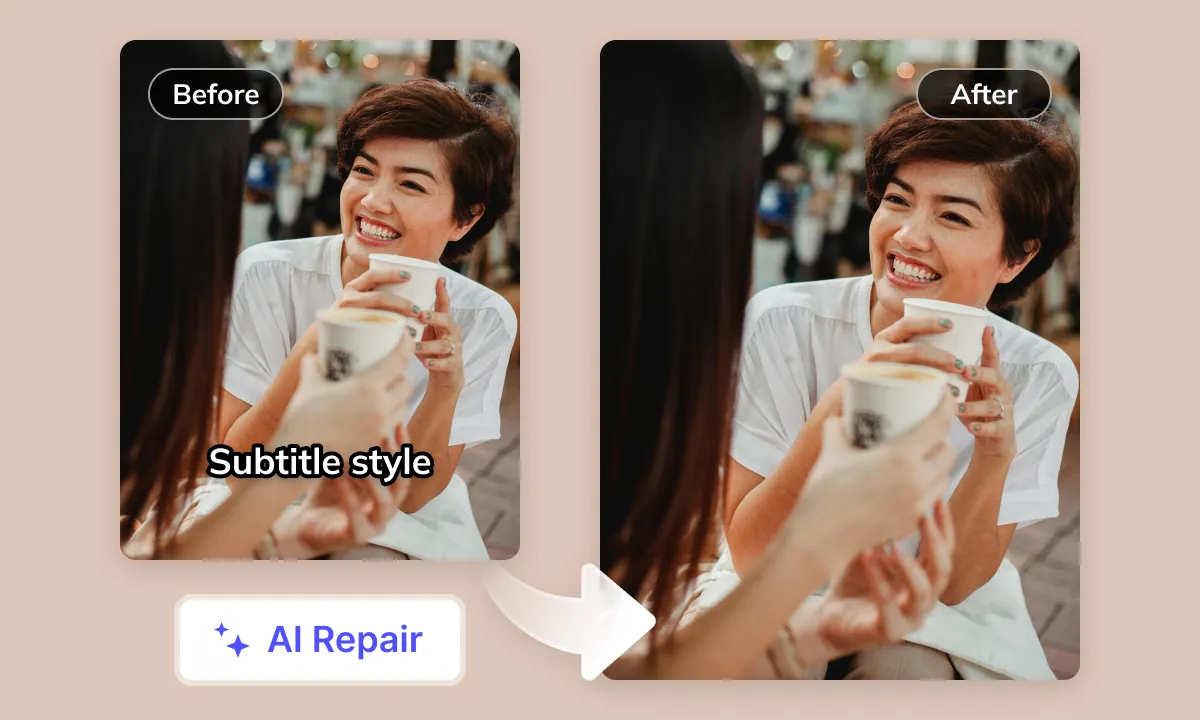
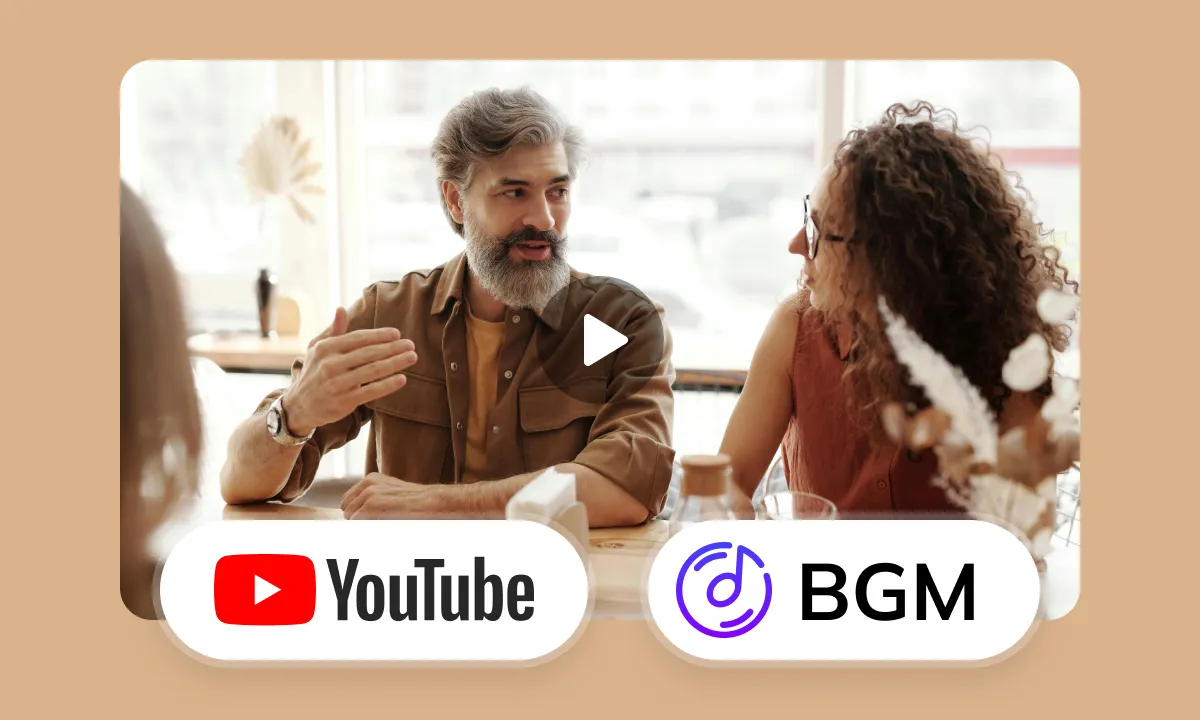
Smart Audio Control for YouTube Creators
Navigating BGM copyright on YouTube is tricky. GhostCut’s advanced audio separation isolates Japanese dialogue for translation, while intelligently managing BGM, sound effects, and even emotional expressions. Our "Keep SFX, Remove Music" option is a creator favorite for avoiding copyright issues without losing your video’s impact.
Translate NowBring Your Japanese Content to the Turkish-Speaking World
Great Japanese video content, from anime clips and cultural explorations to life vlogs, struggles to reach and be appreciated by the vast Turkish-speaking audience due to language barriers. On global platforms like YouTube and TikTok, quality Japanese-to-Turkish translation or dubbing is often missing for many excellent videos. This makes understanding difficult for Turkish viewers, significantly harming their experience, reducing engagement, and limiting the content's cross-cultural spread. Consequently, there's a pressing market need for professional, efficient AI solutions for Japanese-to-Turkish video translation and dubbing
Japanese to Turkish Video Translation: Challenges and Considerations
Hardcoded Subtitles and Original Audio Issues
Untreated hardcoded Japanese subtitles and the original Japanese audio in the source video can significantly impair the viewing experience and comprehension for Turkish audiences
Cultural, Grammatical, and Lexical Differences
Japanese's unique honorifics, rich idioms, cultural allusions, and sentence structures (e.g., verb-final) differ significantly from Turkish. Turkish, an agglutinative language, has complex word morphology and regional expressions. Accurately and authentically translating the nuances and cultural meanings of Japanese into Turkish, while adapting to its grammatical structures and idiomatic expressions, presents a core challenge
Subtitle Characteristics and Layout
Japanese subtitles combine Kanji and Kana, resulting in high visual information density. Turkish uses the Latin alphabet, and due to its agglutinative nature, words can be quite long. When translating into Turkish subtitles, it's crucial to reconsider character length per line and proper line breaks to ensure clarity and readability, avoiding overcrowding or excessively short display times
Pacing and Synchronization Challenges
Japanese dialogue often has a relatively fast pace. Turkish, due to its complex word variations and sentence construction, may require longer expressions to convey the same meaning. Ensuring that the translated Turkish voiceover or subtitles synchronize well with the original video's pacing and on-screen content is a significant challenge
Japanese AI Recognition Accuracy
Current AI Japanese speech recognition technology still faces fluctuating accuracy when dealing with diverse Japanese accents, rapid multi-character dialogues, and complex background noise
Scarcity of High-Quality Turkish AI Voices
While the availability of AI Turkish voice options is increasing, finding high-quality voices that are emotionally rich, natural-sounding, and suitable for diverse applications remains scarce. Existing voices may often sound stiff or mechanical
Lip-Sync Difficulties
Differences exist in the pronunciation methods and corresponding lip movements between Japanese and Turkish. Achieving a high degree of lip synchronization during Turkish dubbing to ensure a natural viewing experience presents a significant technical challenge
Standards for Top-Tier AI Video Translation
Ideal AI Japanese to Turkish video translation should achieve: high-accuracy Japanese speech recognition - authentic Turkish translation that fully considers cultural, grammatical, and lexical characteristics - high-quality Turkish voiceover (with strong emphasis on lip synchronization) - automated precise audio-visual alignment and editing
Tackling Video Translation Challenges with AI Empowering your Japanese content for any worldwide scenario.
Your All-in-One AI Translation Studio
GhostCut offers more than just Japanese-to-Turkish translation. It's a complete AI-powered workflow: subtitle extraction 、 removal 、 translation and proofreading to multi-character dubbing , BGM processing, and final rendering. Go from Japanese source to global-ready videos, effortlessly.
